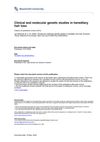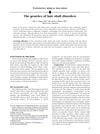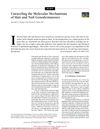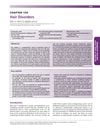Ectodermal Dysplasia: Otolaryngologic Manifestations and Management
June 2002
in “
The Laryngoscope
”
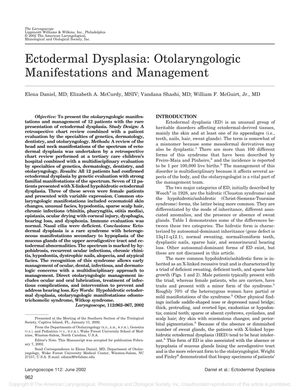
TLDR Ectodermal dysplasia causes various symptoms and early treatment is important for eye, dental, and skin issues.
The study retrospectively reviewed the otolaryngologic manifestations and management of 12 patients with ectodermal dysplasia at a tertiary care children's hospital, with evaluations by genetics, dermatology, dentistry, and otolaryngology specialists. All patients had genetically confirmed ectodermal dysplasia, with 7 of the 12 presenting with X-linked hypohidrotic ectodermal dysplasia, including 3 females with variable expression. Common manifestations included skin changes, facial abnormalities, missing teeth, sparse scalp hair, chronic infections, nosebleeds, corneal injury due to ocular drying, swallowing difficulties, hearing loss, and voice disorders. Despite normal immune evaluations, nasal cilia were deficient. The study concluded that ectodermal dysplasia is characterized by a range of symptoms due to underdeveloped mucous glands and ectodermal issues, including reduced sweating, recurrent eye infections, chronic nasal inflammation, missing teeth, abnormal nails, hair loss, and unusual facial appearance. Early recognition is crucial for managing ocular, dental, infectious, and skin-related issues through a multidisciplinary approach, with otolaryngologic management focusing on lubrication of eyes and mouth, treating infections, and addressing hearing loss.
